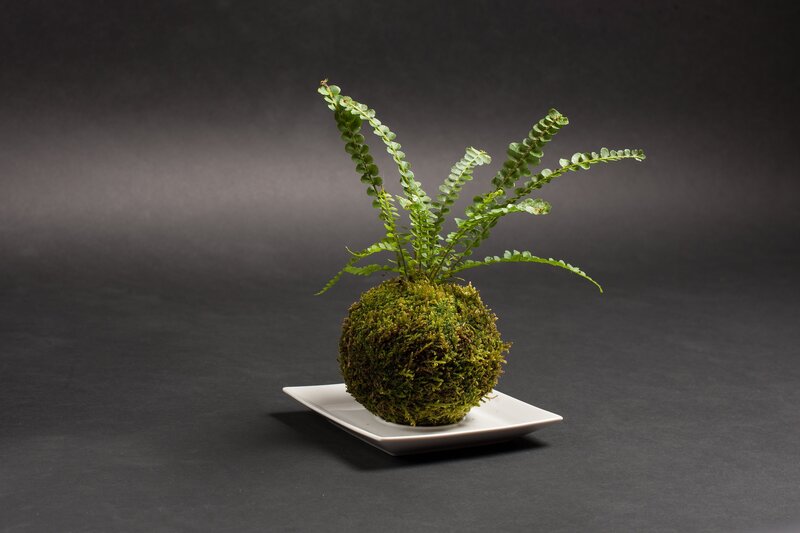Guard Your Garden Plants Against Winter Frost
Posted on 31/05/2025
Guard Your Garden Plants Against Winter Frost: Expert Strategies for Protection
As the icy winds of winter approach, gardeners everywhere brace themselves for the perennial challenge of safeguarding their cherished plants. Frost can wreak havoc on even the hardiest flora, turning vibrant gardens into a scene of wilt and decay almost overnight. However, with the right know-how, you can protect your garden plants from winter frost and ensure they thrive come springtime. In this comprehensive guide, we delve into actionable strategies, time-proven techniques, and important tips to safeguard your garden against the chilling grip of frost.

Understanding Frost and Its Impact on Garden Plants
Before adopting frost-protection measures, it is crucial to understand what frost actually is and how it affects your plants. Frost occurs when temperatures drop low enough for water vapor in the air to freeze, typically below 0?C (32?F). The formation of frost crystals on leaves and stems disrupts cellular functioning, causing tissues to collapse and turn brown or black - a phenomenon commonly referred to as frost damage.
- Light Frost: Occurs at temperatures between 0?C and -2?C. Hardy plants may survive, but tender varieties are at risk.
- Hard Frost: Forms at -2?C (28?F) or below, potentially fatal to most plants not adapted to such cold.
Some garden plants have evolved mechanisms to survive winter frost, while others--particularly exotic or tender annuals--require vigilant protection to weather the cold season.
Assessing Your Garden's Risk
Not all gardens are equally vulnerable to frost. Factors such as microclimate, garden layout, elevation, and plant selection play a significant role in determining the potential impact of cold weather. To guard your garden plants against frost, start by assessing the unique risks in your landscape:
- Identify frost pockets: Low-lying areas collect cold air, making them more susceptible to freezing.
- Check wind barriers: Fences, walls, and dense shrubs can buffer against biting cold winds.
- Observe sun patterns: South-facing slopes and beds receive more winter sunlight, offering extra warmth.
- Know your plants: Make a list of the species in your garden and research their hardiness ratings.
This initial assessment will help you determine which plants require winter frost protection and which areas need extra attention.
The Best Techniques for Frost-Proofing Your Garden Plants
There are many effective ways to shield your garden from winter frost. Employing a combination of these techniques increases the chances of your plants surviving even the harshest cold snaps.
Mulching: Nature's Insulating Blanket
Mulching is one of the simplest and most effective ways to insulate soil and plant roots during winter frost. Organic mulches--such as straw, leaves, wood chips, or compost--act as a warm blanket, stabilizing soil temperatures and preventing moisture loss.
- Application tips: Spread mulch 2-4 inches deep around the base of plants, avoiding direct contact with stems to prevent rot.
- Types of mulch: Use straw for vegetable gardens, bark for perennial beds, and shredded leaves for delicate flowers.
Pro tip: Apply mulch in late autumn before the first hard frost for maximum effectiveness.
Row Covers and Garden Blankets: Portable Plant Protection
Gardeners often turn to frost cloths, row covers, or specially designed garden blankets to shield vulnerable plants. These covers provide a barrier between the plant and frosty air, trapping warmth from the soil overnight.
- How to use: Drape the cover over plants in the evening and remove in the morning as temperatures rise.
- Materials: Lightweight fabrics (fleece, spun-bonded polypropylene) allow air circulation while protecting from frost.
- DIY option: Old bed sheets, burlap sacks, or even newspaper can provide emergency protection.
Remember: Do not use plastic sheeting directly on plants as it can trap moisture and cause more harm than good.
Cold Frames and Cloches: Miniature Greenhouses for Fragile Plants
For gardeners who want a long-term solution, cold frames and cloches provide robust protection against winter frost. These structures capture solar heat during the day and release it slowly at night, creating a warmer microclimate around tender crops or blossoms.
- Cold frames: Box-like structures with transparent lids sit over garden beds.
- Cloches: Dome-like covers (glass or plastic) are perfect for shielding individual plants or seedlings.
Both solutions are highly recommended for vegetable gardeners hoping to extend the growing season through winter.
Watering: The Role of Soil Moisture in Frost Protection
It may seem counterintuitive, but slightly moist soil retains heat better than dry ground. Watering your plants a day or two before a predicted freeze can make a dramatic difference in their ability to withstand winter frost.
- Timing: Water in the early afternoon so excess moisture has time to soak in before nightfall.
- Amount: Soil should be damp, not soggy--overwatering can cause root rot during cold snaps.
Important: Avoid watering in the evening or before a deep freeze, which may exacerbate damage.
Choosing the Right Plants: Planting for Winter Resilience
One of the wisest strategies in any gardener's playbook is selecting plants that are naturally frost-resistant. Read plant labels or consult local specialists about the hardiness zone appropriate for your climate. Native perennials, cold-tolerant shrubs, and hardy bulbs (such as daffodils or crocus) often fare much better in winter conditions.
- Hardy perennials: Hellebores, sedums, and heuchera.
- Vegetables: Kale, spinach, leeks, and Brussels sprouts.
- Evergreens: Boxwood, juniper, and yews offer year-round color and protection.
Planting at the proper time in fall allows roots to establish before frost sets in, giving plants a better shot at surviving the cold months.
Windbreaks: Reducing Exposure to Freezing Winds
Cold winds increase the stress on plants and suck vital moisture from leaves and stems. Use existing structures such as fences or hedges as windbreaks, or plant a line of evergreens to act as natural buffers. Temporary solutions--such as burlap screens--can also be erected around delicate plants for the winter.
Emergency Measures: Dealing with Sudden Frost Events
Even the best-prepared gardener can be caught off guard by an unexpected frost warning. When frost threatens with little warning, speed is key. Here are quick-response actions to help save your plants from winter frost:
- Cover vulnerable plants: Use anything handy--blankets, towels, or cardboard boxes.
- Harvest delicate produce: Pick unripe tomatoes, peppers, or squash if frost is imminent.
- Move potted plants: Bring containers indoors or group them together against a sheltered wall.
- Water in advance: If time allows, moisten the soil lightly to help retain heat overnight.
After frost passes, check plants for damage and prune away any affected foliage to prevent disease.
Best Practices and Long-Term Planning for Winter Garden Protection
While emergency measures are vital, integrating frost protection strategies into your yearly garden routine delivers the best results. Here's how to build resilience season after season:
1. Keep an Eye on the Forecast
Local weather apps and gardening almanacs can alert you to frost risk. Pay attention to overnight lows in late fall and early spring, as these shoulder seasons are when most unexpected freeze events occur.
2. Site Selection and Garden Design
- Plant tender species in warmer microclimates: South-facing locations or near heat-retaining structures.
- Avoid frost-prone pockets: Raise beds or add gravel for improved drainage.
- Utilize thermal mass: Place stones or bricks around beds to absorb and release heat.
3. Seasonal Plant Care
Preparing your garden for winter involves more than just covering plants:
- Stop fertilizing: Cease feeding in late summer to avoid new, frost-vulnerable growth.
- Prune wisely: Avoid heavy pruning right before winter; wait until spring for most woody plants.
- Avoid watering late: Prevent excess water sitting on roots during the coldest months.
4. Invest in Tools and Materials
A well-equipped gardener is a prepared gardener! Stock up on:
- Reusable frost covers or garden blankets
- Mulch (straw, bark, or shredded leaves)
- Cold frames or cloches
- Thermometers to monitor minimum temperatures
Common Mistakes to Avoid When Protecting Plants from Winter Frost
Even with the best intentions, mistakes can occur. Here are some pitfalls to avoid when guarding your plants against frost:
- Using plastic sheeting directly on foliage: Trapped condensation freezes, increasing plant damage.
- Covering plants too tightly: Lack of air circulation leads to rot and fungal issues.
- Neglecting to remove covers: Prolonged covering during the day can cause overheating and disease.
- Over-mulching: Applying too deep a layer can smother roots and attract pests.
- Delaying frost response: Waiting until after frost has hit often means it's too late for some plants.

Sustainable and Eco-Friendly Winter Frost Protection Methods
Environmentally conscious gardeners can guard their garden plants from winter frost using sustainable techniques:
- Compostable mulches: Use shredded leaves, straw, or spent plant material from your own garden.
- Reusable covers: Invest in durable fabric garden blankets to reduce waste.
- Natural windbreaks: Plant living hedges for ongoing protection year after year.
- Native cold-resistant plants: Shift towards varieties that require minimal intervention.
Conclusion: Ensure Your Garden Thrives Beyond Winter
With planning, vigilance, and the strategies discussed above, you can protect your garden plants from winter frost and enjoy a healthy, colorful landscape each year. Remember to assess your garden risk, integrate protective techniques, and act swiftly during sudden cold snaps. By guarding your garden against winter frost, you're investing not just in this season's blooms but in the beauty and bounty of many gardens to come.
Take charge this winter--wrap up your plants, mulch your beds, and watch your garden emerge in spring stronger than ever!



